With pre-election opinion polls hinting at a big win for the Bharatiya Janata Party and its allies in Maharashtra and a clean sweep in Haryana, the results of Monday’s vote appear to be a foregone conclusion. When voters in the two states choose the BJP on Monday, however, one rhetorical question will linger in the air – despite passing three laws on quotas for groups that are not backward by objective measures, how has the BJP managed to sell its narratives to the voting public?
Having passed a 10 per cent central quota for the economically backward among those groups not currently covered by reservation, and state-level quotas for Marathas and Jats in Maharashtra and Haryana, respectively (all three laws currently facing legal challenges before the Supreme Court), the BJP has pulled off a political sleight of hand, and made up for angering the excluded groups these quotas impinge upon through deft political management.
The position of Marathas in Maharashtra is different in some significant ways from the Jats in Haryana, even though they are both non-Brahmin forward caste groups that have agitated for reservations in government jobs and educational institutions. Maharashtra’s Brahmins are much better off than Marathas, as compared to the gap between Brahmins and Jats in Haryana.
Also read: All that Raj Thackeray wants is to be in Maharashtra’s opposition
On most key indicators – income, asset ownership, education – non-Brahmin forward castes are largely indistinguishable from Brahmins, with Brahmins having the edge, an analysis of India Human Development Survey (2011-12) data by Nitin Kumar Bharti, Research Fellow at the World Inequality Lab and a PhD student at the Paris School of Economics, has shown. But in both Maharashtra and Haryana, it is clear that Marathas and Jats are the “creamy layer” within non-Brahmin forward castes; they are richer than all other non-Brahmin forward caste groups.
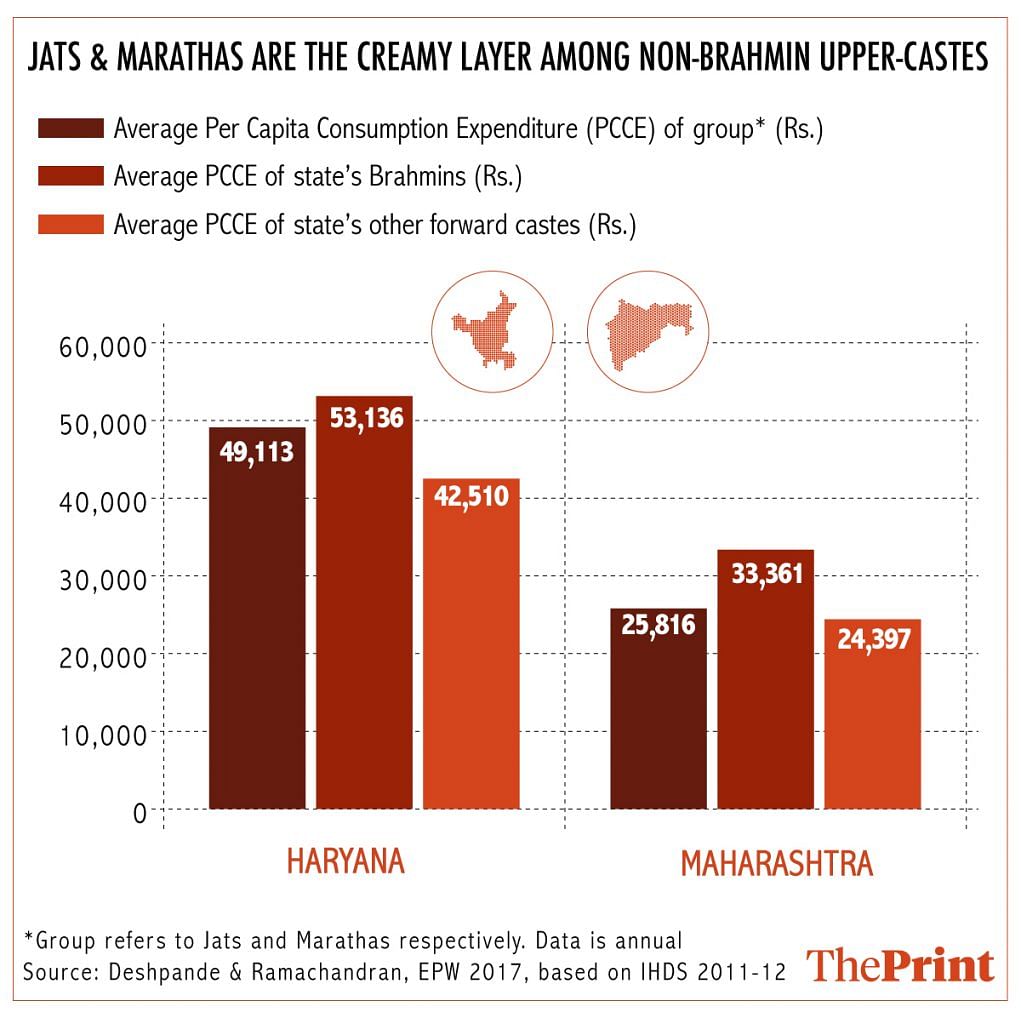
There is a substantial gap between the consumption expenditure of Marathas and Jats, and marginalised groups OBCs, SCs and STs within each state. This gap has only grown with time. Economists Ashwini Deshpande and Rajesh Ramachandran compared the 2004-05 and 2011-12 rounds of the IHDS and found that Jats increased their consumption expenditure as compared to the other social groups, and decreased the incidence of poverty. In Maharashtra, Marathas had significantly higher consumption expenditure than other social groups and the same probability of being poor.
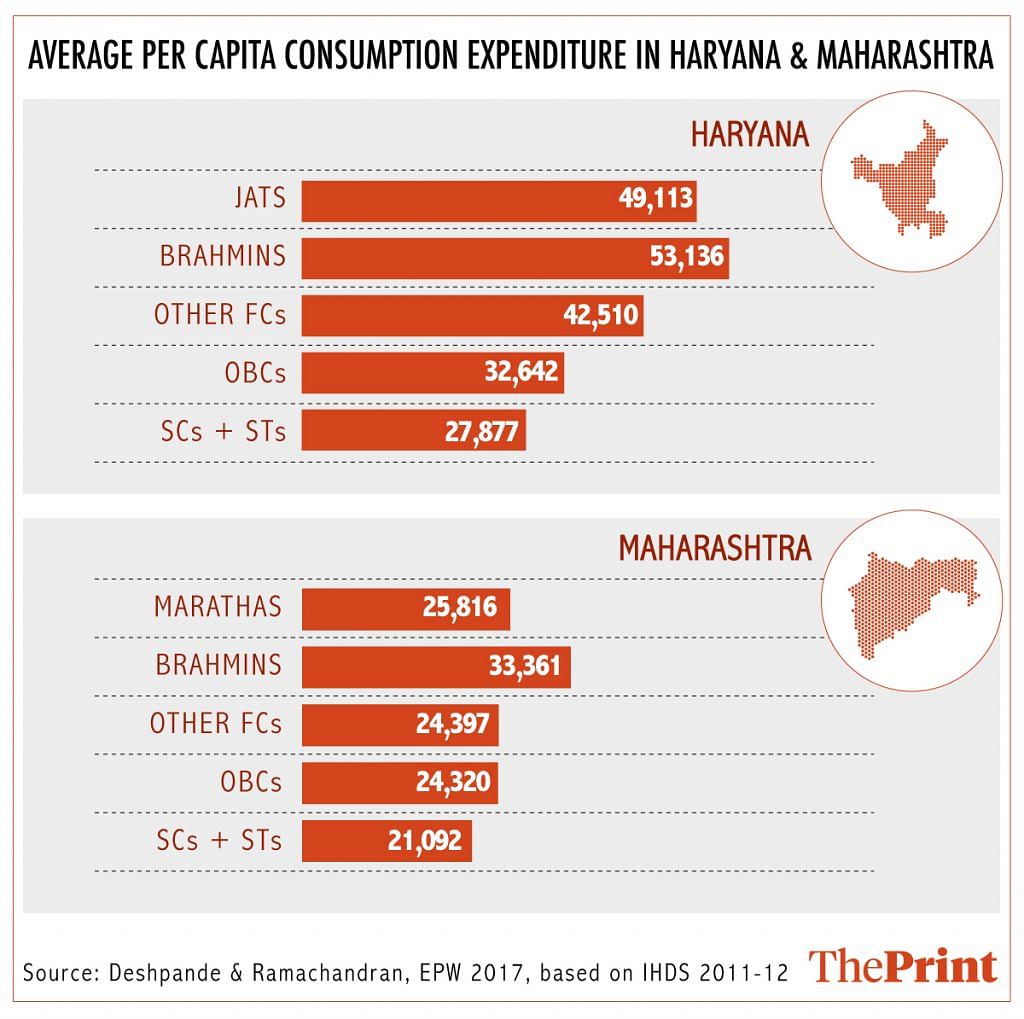
Also read: ‘Modi wave’ gave BJP Haryana in 2014, but party is looking at CM Khattar this time
On most indicators of asset ownership as well, Marathas and Jats outperform all groups except Brahmins. They are also by far the biggest landowners (but Deshpande and Ramachandran caution that the share of Jats and Marathas who owned land fell between 2004-05 and 2011-12; this could be a result of farmers selling their land for greater profits, but could explain some of the insecurity these groups are experiencing).
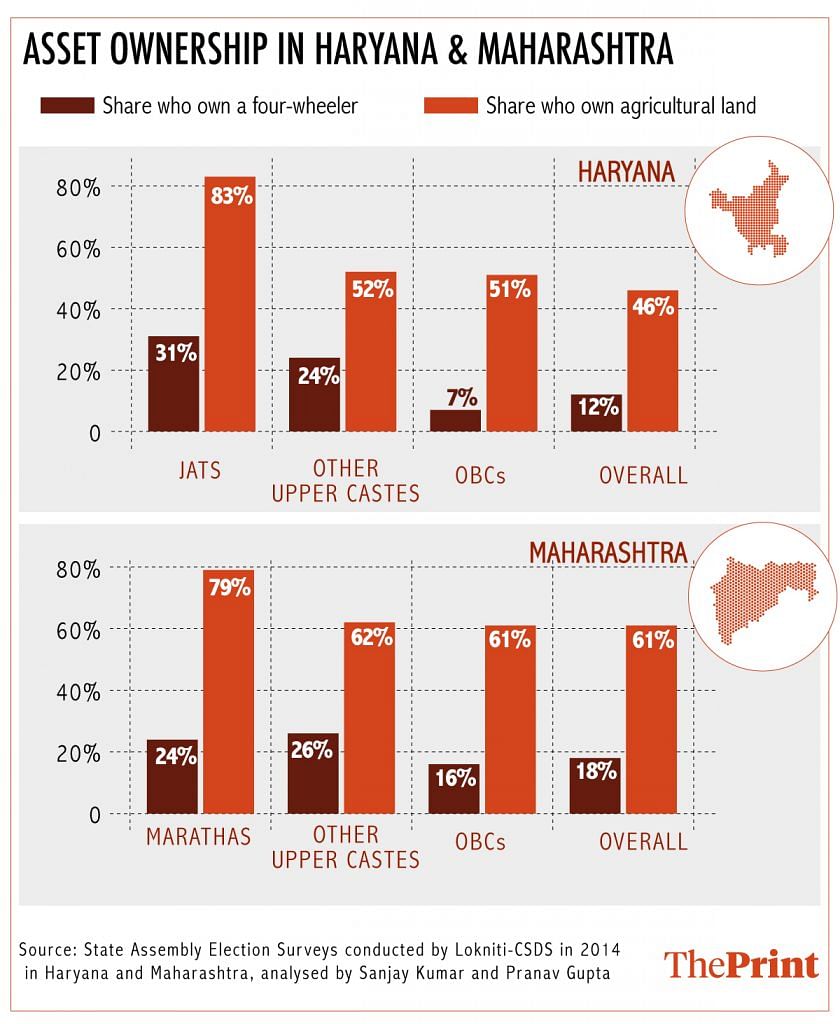
Another potential source of insecurity is that to some extent, Jats and Marathas lag behind Brahmins in education (but they do much better than marginalised castes). This finding is also borne out by the analysis of CSDS state election survey data in the two states. Additionally, Marathas and Jats lag behind both Brahmins and other forward castes in their fluency in English.
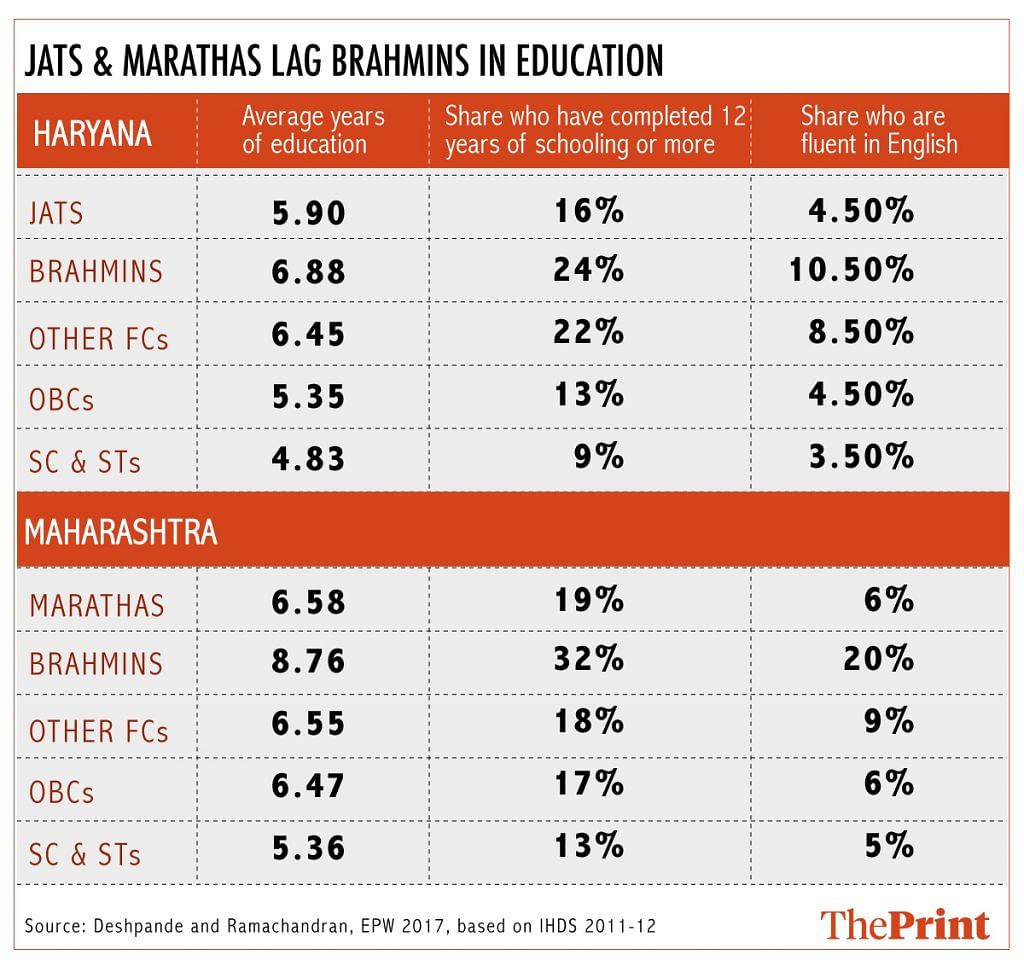
Finally, there is access to government jobs, which is a key driver of demands for reservation. In Maharashtra, Marathas are as likely to have government jobs as other groups, and in fact are more likely to have government jobs than other non-Brahmin forward castes and the OBCs. In Haryana, Jats are significantly less likely to have government jobs than even Haryana Brahmins, which could fan resentment. But the Narendra Modi government’s 10 per cent quota for the poor among upper castes could mathematically neutralise any gains for Jats if their quota was to come through.
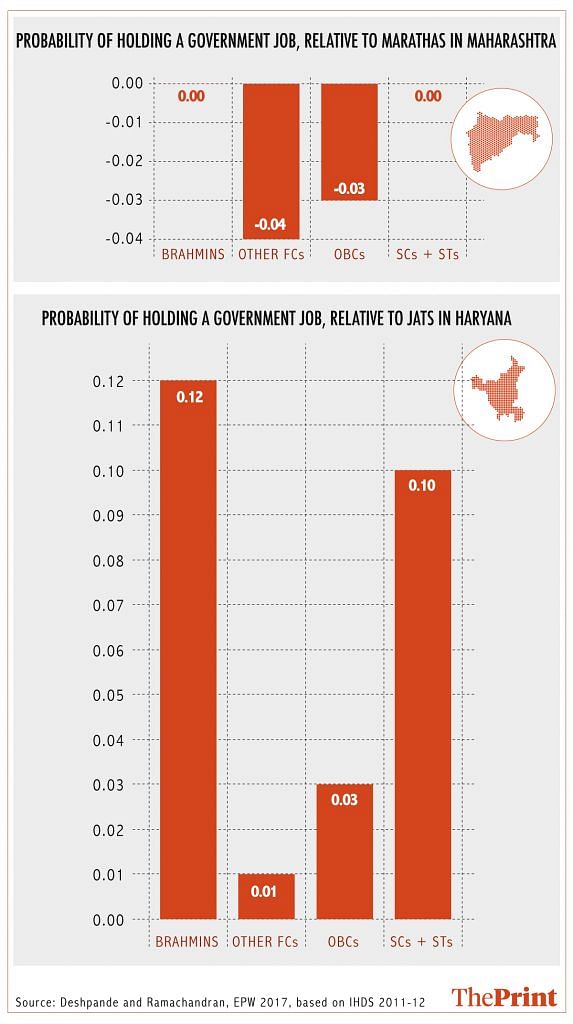
What is harder to measure is the extent of social discrimination experienced by these two groups, if any. Deshpande and Ramachandran use the proxy of the likelihood of practising untouchability to estimate where each group sees itself on the caste hierarchy, and conclude that while the practice of untouchability places Jats alongside the OBCs in where they see themselves, the differences are indistinguishable in Maharashtra where the self-reported extent of practising untouchability is low for all groups. But even if the BJP governments in the two states did intend to make an argument based on social backwardness (which they did not advance), the Centre’s 10 per cent quota for the poor among upper castes, who by definition do not experience social backwardness, makes the argument as such internally inconsistent.
Also read: Devendra Fadnavis is so strong in Maharashtra that he is ready to wrestle, but ring is empty
Neither do these inconsistencies appear to bother Jats and Marathas themselves or the upper castes with similar perceived grievances, nor do they truly bother the marginalised communities of OBCs, SCs and STs. Between the 2014 and 2019 Lok Sabha elections, the voteshare of the BJP grew among all caste groups in both states (though the party was still only third most preferred in Maharashtra, the lion’s share going to its ally Shiv Sena).

With deft messaging and a weak opposition, the BJP has managed to make its performance on unemployment and the economy irrelevant to elections. On Monday, it would appear, so will its contradictory and obfuscatory social engineering.
The author is a Chennai-based data journalist. Views are personal.


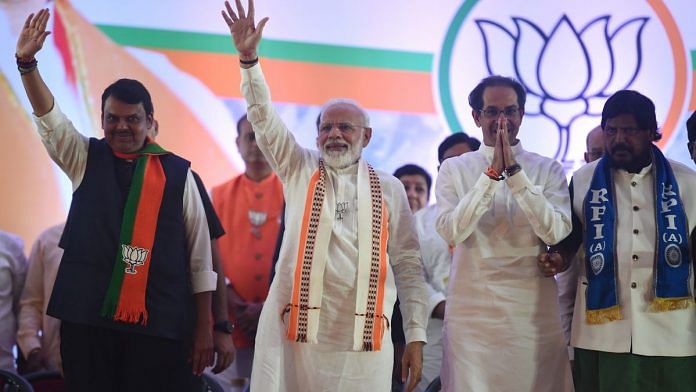

Deception and sleight of hand is the hallmark of BJP under Modi and Shah. If the people vote for them, they deserve what they get.